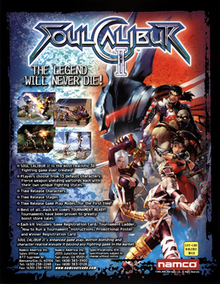
Soulcalibur is a weapon-based 3D fighting game developed by Project Soul and produced by Namco. It is the second game in the Soulcalibur series, preceded by Soul Edge in December 1995. Originally released in arcades on July 30, 1998, it ran on the Namco System 12 hardware. It was ported to the Dreamcast in 1999 with new features and improved graphics. The North American version was released in September 1999 as a launch game for the Dreamcast and was part of the successful launch of the new console. It became available as a downloadable title on the Xbox 360's Xbox Live Marketplace in July 2008 and it is forward compatible with the Xbox One along with the sequel, Soulcalibur II.

Soul Edge is a fighting game developed by the Namco team Project Soul and published by Namco as the first installment in the Soulcalibur series of 3D fighting games. Introduced at the JAMMA trade show in November 1995, the full arcade game was released in early 1996, while later in December an upgraded and expanded version of the game was ported to the PlayStation. The PlayStation version was renamed Soul Blade in North America, Europe, and Australia.
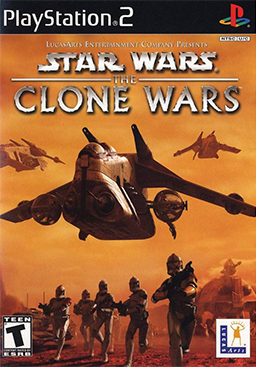
Star Wars: The Clone Wars is a video game set in the Star Wars universe developed by Pandemic Studios and published by LucasArts for GameCube, PlayStation 2 and Xbox. It consists mostly of vehicular combat using clone warships, starfighters, speeder bikes and tanks, as well as missions where players can control Anakin Skywalker, Obi-Wan Kenobi, or Mace Windu on foot. The game is set in the Star Wars prequel trilogy era, with the first level encompassing the Battle for Geonosis from Episode II: Attack of the Clones. The game also features multiplayer modes for up to four players in splitscreen, or online via Xbox Live for the Xbox. It holds aggregate scores of 73 out of 100, 72 out of 100 and 71 out of 100 on review aggregator Metacritic for the GameCube, PlayStation 2, and Xbox, respectively.
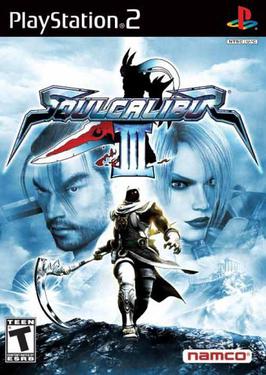
Soulcalibur III is a fighting video game produced by Namco as a sequel to Soulcalibur II and the fourth installment in the Soulcalibur series. It was originally released for the PlayStation 2 in 2005. An improved arcade version, Soulcalibur III: Arcade Edition, was released in 2006. It was the last Soulcalibur game to receive an arcade version, as IV onwards did not have an arcade release, and was also the last to be released by Namco as an independent company, as it would merge with Bandai's video game division to form Bandai Namco Entertainment in 2006.
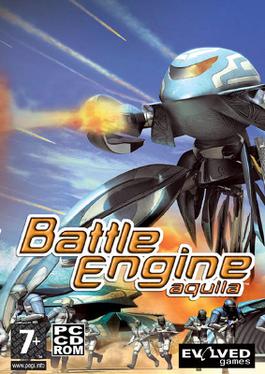
Battle Engine Aquila is a 2003 video game for PlayStation 2 and Xbox developed by Lost Toys and published by Infogrames Europe. In the game the player pilots the Battle Engine for the Forseti military in their wars against the Muspell to decide who will rule what's left of the world. Battle Engine Aquila received little attention from the public despite overall good reviews from critics. It was listed as #86 in the Top 100 Games for PlayStation 2 by IGN. A later Microsoft Windows port was published by Encore Software.

Nightmare is a fictional character in the Soulcalibur series of video games. The evil possessor of Siegfried Schtauffen's body, he later becomes an entity entirely separated from Siegfried in Soulcalibur III onward. Nightmare is the living incarnation of Soul Edge and a vessel for Inferno.

Isabella Valentine, commonly called Ivy, is a character in the Soulcalibur series of video games. Created by Namco's Project Soul division, she first appeared in the original Soulcalibur and its subsequent sequels, later appearing in various merchandise related to the series. She was voiced in Japanese by Yumi Tōma between Soulcalibur and Soulcalibur III, Kanako Tōjō between Soulcalibur Legends and Soulcalibur: Broken Destiny, and Miyuki Sawashiro in Soulcalibur V, and Soulcalibur VI; in English, she was voiced by Renee Hewitt in Soulcalibur II and Lani Minella for the remainder of the series.

Necrid is a character in the Soulcalibur series of weapon-based fighting games. Designed by comic book artist and toy designer Todd McFarlane through a collaboration with Namco, the character appeared in console ports of Soulcalibur II and later as part of an action figure set created by McFarlane Productions. Though designed and named by McFarlane, Necrid's concept and physical build were outlined by Namco, who aimed to target North American audiences with the character. Necrid's spoken lines in the game are unintelligible, and no voice actor has been credited.
Soulcalibur is a weapon-based fighting game franchise developed by Bandai Namco Studios and published by Bandai Namco Entertainment.
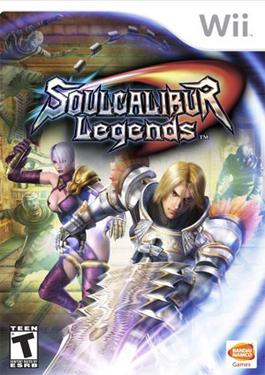
Soulcalibur Legends is an action-adventure game for the Wii console. It is a spin-off of Bandai Namco's successful Soulcalibur fighting game series and primarily features two of its most popular characters: Ivy and Siegfried.

Soulcalibur IV is a 2008 fighting video game developed by Project Soul and published by Namco Bandai Games for the PlayStation 3 and Xbox 360. It is the fifth installment in the Soulcalibur series, featuring greatly improved visuals over its predecessor and three playable guest characters from the Star Wars franchise. It is also the first Soulcalibur game to not receive an arcade version.
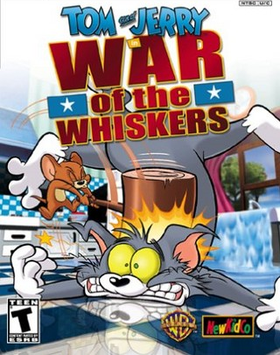
Tom and Jerry in War of the Whiskers is a fighting video game developed by VIS Entertainment, published by NewKidCo for PlayStation 2, GameCube, and Xbox. It is the sequel to the 3D cartoon fighting video game Tom and Jerry in Fists of Furry for Nintendo 64 and Microsoft Windows. It allows up to four players to play simultaneously. It is the only NewKidCo game and the only Tom and Jerry game, released to receive a T rating. The PlayStation 2 version was released in all major regions, and the GameCube and Xbox versions were only released in North America. The game received mixed reviews from critics, with Metacritic scores of 63/100, 64/100, and 50/100 on PlayStation 2, GameCube, and Xbox, respectively.

Sophitia Alexandra is a character in the Soulcalibur series of video games. Created by Namco's Project Soul division by designers Aya Takemura and Takuji Kawano, she first appeared in Soul Edge and its subsequent sequels, later appearing in various merchandise related to the series. A baker turned warrior from Athens fighting with a Xiphos and shield, Sophitia became involved in the search for the cursed sword Soul Edge at the behest of the god Hephaestus. The affair soon affected her other family members as well, including her sister, Cassandra, and later her children, Pyrrha and Patroklos.

The following is a comprehensive list of characters from the Soulcalibur series of video games, beginning with Soul Edge in 1995.

Taki is a character in the Soulcalibur series of video games. Created by designers Aya Takemura and Takuji Kawano of Namco's Project Soul division, she was introduced in Soul Edge, and later appeared in almost every subsequent sequel. Taki is a Japanese demon-hunting kunoichi and the greatest warrior of the Fu-Ma ninja clan. She is traveling the world on a quest to destroy the cursed sword Soul Edge. Taki has been featured as a player character in every main entry in the series up until 2012's Soulcalibur V, when her place was taken by her own young disciple named Natsu, but she returned in 2018's Soulcalibur VI. She has further appeared in all of Soulcalibur spin-off games, as well as in some other titles such as Namco × Capcom, The King of Fighters All Star, and Queen's Gate. She has been voiced in Japanese by Fujiko Takimoto until Soulcalibur III, and then by Sachiko Kojima and Nanako Mori in later games, while her English voice actors include Desirée Goyette and Cynthia Holloway.
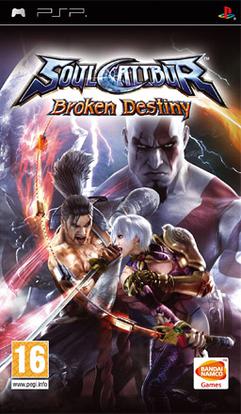
Soulcalibur: Broken Destiny is a 2009 fighting video game in the Soulcalibur series, developed by Project Soul and published by Namco Bandai Games, for the PlayStation Portable. The game uses many of the features of Soulcalibur IV, including its character customization mode. One of the goals of the game is "to target beginners and novice players with Soulcalibur IV's content." It introduces two new characters to the series: Kratos from the God of War series and Dampierre, a new original character. In December 2023, the game was released digitally on PlayStation 4 and PlayStation 5.
Soulcalibur is a weapon-based fighting game series by Namco Bandai Games. The series revolves around a sword that, after years of bloodshed and hatred, gained a soul of its own, the Soul Edge, and the sword forged to counter it, Soulcalibur. The discography of the Soulcalibur series consists of two soundtrack albums for the first game in the series, Soul Edge, and one soundtrack album each for Soulcalibur, Soulcalibur II, III, IV, V and VI. None of the other games in the series have received a soundtrack release.
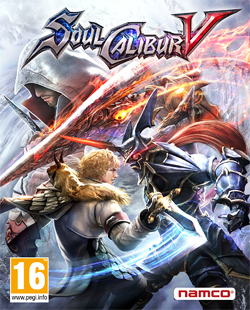
Soulcalibur V is a fighting video game developed and released by Namco Bandai Games for the PlayStation 3 and Xbox 360 in 2012.

Soulcalibur: Lost Swords was a free-to-play fighting game distributed through PlayStation Network. Released in 2014, the game is based on Soulcalibur V and is strictly single-player. It uses the same weapon-based fighting system from previous games; however, several of the gameplay mechanics were changed, simplified or otherwise removed.

Soulcalibur VI is a 2018 fighting video game developed by Bandai Namco Studios and Dimps and published by Bandai Namco Entertainment. It is the seventh main installment and reboot in the Soulcalibur series. It released for the PlayStation 4, Windows, and Xbox One on October 19, 2018.
